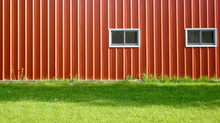Spray Foam Insulation FAQ
As you've been researching your insulation options, you've probably come across the term "spray foam." (Gee, we mention it a lot here too!) Not sure what we're referring to? Don't worry! We've got the answers to all your questions.
What is spray foam insulation?
Spray foam insulation is a spray-applied plastic used to insulate buildings and seal walls, floors and ceilings against air movement. Spray foam insulation resists heat transfer extremely well (this makes it a very efficient insulator!), muffles noise and even deters mold growth. We're big fans!

What is the advantage of using spray foam?
Spray foam has a lot of advantages over traditional fiberglass insulation, one of which is its ability to expand to fill every tiny nook and cranny. Think of it like a windbreaker, where fiberglass is a wool sweater. That wool sweater will keep you warm, but if the wind is blowing it will flow right through.
How is spray foam applied?
Spray foam insulation is applied by a skilled technician through a spray gun. The material comes in two separate drums, one filled with a polyol blend and the other with isocyanate (check out the ingredients here, if you're interested!). Fun fact: this is why spray polyurethane is called a "two-component foam."
When the trigger is pulled, the two liquids travel up through a heated hose where they are combined in a chemical reaction that produces polyurethane foam. When the foam exits the gun it expands 3 to 5 times its size and then hardens almost immediately. Cool, right?

What's the difference between open cell and closed cell foam?
Spray foam is often referred to as either "open cell" or "closed cell." These terms simply signify how pliable or dense the material used is.
Open cell spray foam is lightweight and has a more open structure that allows it to flex as it settles, while closed cell spray foam is heavier and more resistant to weathering and temperature change.
What's the R-value of spray foam?
Closed-cell spray foam provides a much higher R-value per inch than fiberglass and cellulose alternatives. Ward's spray foam insulation of choice provides an R-value of up to 6.8, where less expensive batt-style insulation may only reach 3.7.

How does spray foam improve energy efficiency?
Air leakage through wall, floor and ceiling cavities can account for as much as 40 percent of what you're spending on heating and cooling at home. That's the equivalent of leaving your a window in your house open 24/7, all year long!
Can anyone install spray foam?
Spray foam insulation is best left to the pros as it can only be applied by a contractor equipped with a truck or trailer outfitted with the necessary chemicals and spray equipment.
Additionally, spray foam application is not foolproof. If the materials are poorly mixed, mixed in the wrong ratio or mixed at the wrong temperature, or if spraying is rushed, voids may be left behind. Better leave it to the experts!
Live in Southeast Wyoming or Northern Colorado? Give us a call at 307-632-7777 to schedule a free in-home estimate or fill out the form on our website. We look forward to working with you!























